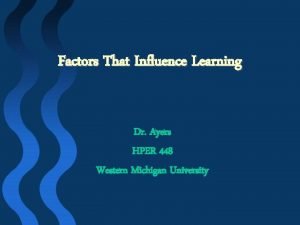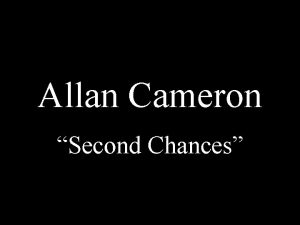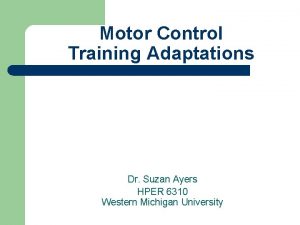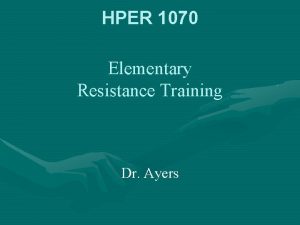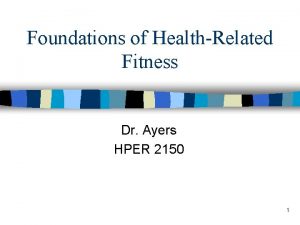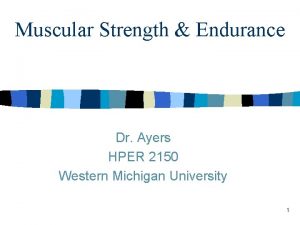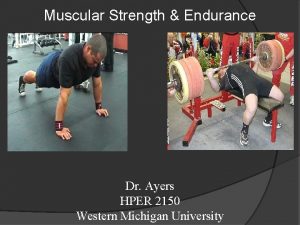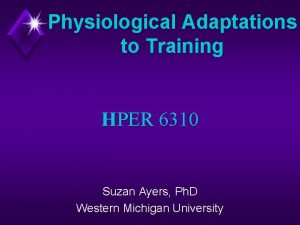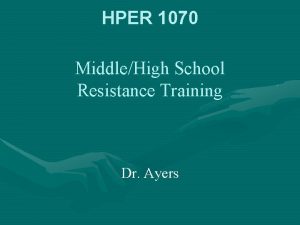Factors That Influence Learning Dr Ayers HPER 448









- Slides: 9

Factors That Influence Learning Dr. Ayers HPER 448 Western Michigan University

Learning “…a relatively permanent change in behavior resulting from experience or training and interacting with biological processes. ” (Rink, 2002, p. 23)

Learning Theories Behaviorist External environment influences behavior Information Processing Learner’s internal cognitive processing influences attention, interpretation, integration Cognitive Holistic; how learners solve problems, create, learn how to learn, apply information

Stages of Motor Learning Box 2. 1, p. 25 Cognitive Big idea and sequence of skill Repetition Associative Timing and coordination Feedback becomes very useful Automatic Performance becomes automatic Focus changes to environmental factors HELP Ss PROCEED THROUGH STAGES SEQUENTIALLY TO FOSTER GAME SKILLS

Motor Skill Learning Requirements Box 2. 2, p. 27 Prerequisites Clear idea of the task Motivation Practice (OTR) Feedback (results, performance)

Open Types of Motor Skills Environmentally influenced (layup, hitting, forehand) Closed Stable environment (free throw, shooting arrows, golf) Discrete Once with clear beginning and end (throw, catch) Serial Series of discrete skills (fielding, dribble/pass) Continuous Arbitrary beginning/ending points (swimming, running)

Whole/Part Types of Practice Whole preferable overall; parts for safety/complexity Variable conditions Speed, distance, space, people Open skills: vary Closed skills: constant conditions Variable skills Pair practice of similar skills (contextual interference) Massed/Distributed Small/frequent practice sessions over time is better than one long practice session (REPETITION)

Transfer of Learning Influence of one learned skill on the acquisition of other skills; can be +//no transfer Bilateral (one side of body to the other) Develop dominant side proficiency first Intertask (one skill to another skill) Depends on # of similar components Intratask (same skills in different conditions) Content development; developmentally appropriate progressions

Cognitive Development Box 2. 3, p. 38 Piaget’s Stages of Cognitive Development: Stage 1: Sensorimotor Stage 2: Preoperational Stage 3: Concrete operational Stage 4: Formal operational Sometimes age ≠ cognitive development
